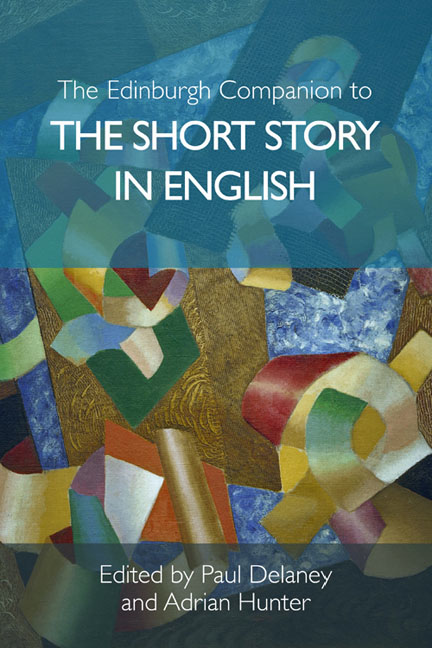Book contents
- Frontmatter
- Contents
- Acknowledgements
- Notes on Contributors
- Introduction
- Part I Historicising the Short Story
- 1 Transnationalism and the Transatlantic Short Story
- 2 The Short Story and the Professionalisation of English Studies
- 3 Impressionism and the Short Story
- 4 Writers on the Short Story: 1950–present
- Part II Publishing the Short Story
- Part III Forms of the Short Story
- Part IV Placing the Short Story
- Part V Identity and the Short Story
- Index of Short Story Titles
- General Index
3 - Impressionism and the Short Story
from Part I - Historicising the Short Story
Published online by Cambridge University Press: 18 December 2019
- Frontmatter
- Contents
- Acknowledgements
- Notes on Contributors
- Introduction
- Part I Historicising the Short Story
- 1 Transnationalism and the Transatlantic Short Story
- 2 The Short Story and the Professionalisation of English Studies
- 3 Impressionism and the Short Story
- 4 Writers on the Short Story: 1950–present
- Part II Publishing the Short Story
- Part III Forms of the Short Story
- Part IV Placing the Short Story
- Part V Identity and the Short Story
- Index of Short Story Titles
- General Index
Summary
SPEAKING IN 2006, the Scottish writer A. L. Kennedy observed:
If you have a generally correct appreciation … of the point of view of the characters, then you have everything. You have the world, the colour of description, you have the density of description – you have this sense of genuinely being within someone else's skin or this genuine understanding of someone else. The short story is the form where you most need to have a grip of point of view or it just doesn't work.
Kennedy's observation indicates not only the extent to which one of the key organisational principles of literary Impressionism – the focus and selectivity of perspective – has become ingrained in contemporary practice but also how far it is associated with the short story form. Indeed, Edgar Allan Poe had long ago argued, with reference to Nathaniel Hawthorne's Twice-Told Tales (1842), that ‘in almost all classes of composition, the unity of effect or impression is a point of the greatest importance’. Although Poe's emphases upon concision, precision and foreshadowing prefigure key tenets of literary Impressionism, his usage echoes David Hume's association of the impression with the realm of the body, the senses and the passions. As Jesse Matz has argued, Hume's distinction forms part of a more complex negotiation between what is most memorable and most ephemeral about the impression, between profundity and banality, which destabilises the alleged philosophic roots to literary Impressionism. In charting the recent historiography of the concept, its origins, rise and fall, and subsequent dissemination into modernist techniques such as the epiphany and stream of consciousness, this chapter will argue that not only are critical attempts to define the short story in terms of Impressionism sundered by its very instability but also its range of potential meaning is complemented by the diversity of the short story form.
As several critics have emphasised, the high watermark for both Impressionist literature and its criticism was in the period from the end of the nineteenth century to the start of the 1920s. First eclipsed by the more combative and non-representational avant-garde movements such as Cubism, Futurism and Vorticism, literary Impressionism was subsequently overshadowed by the consolidation of the modernist canon during the 1940s and 50s by academics such as F. R. Leavis and the New Critics, working on either side of the Atlantic.
- Type
- Chapter
- Information
- The Edinburgh Companion to the Short Story in English , pp. 40 - 55Publisher: Edinburgh University PressPrint publication year: 2018

